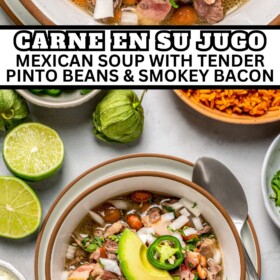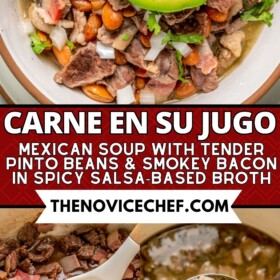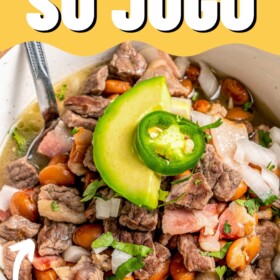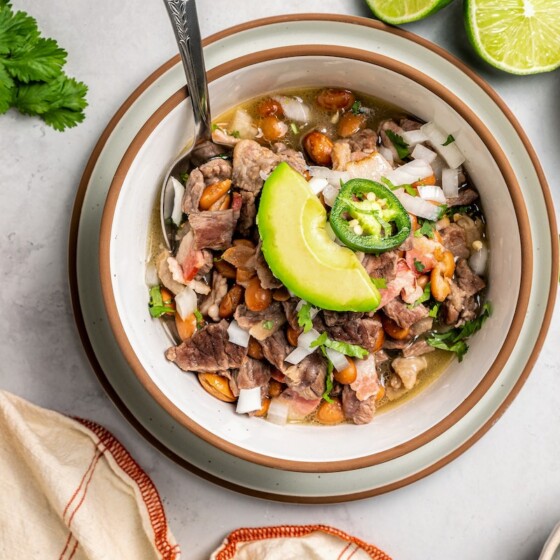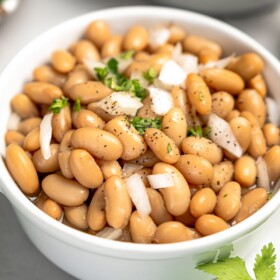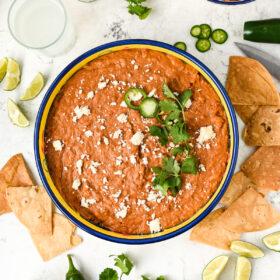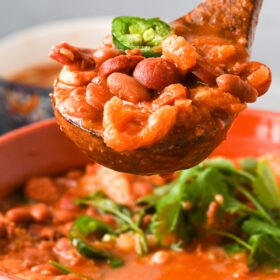Packed with tender beans and smokey bacon, this carne en su jugo recipe will add some spice back into your dinner menu. Simmered to soupy perfection, it’s a comforting way to end the day.
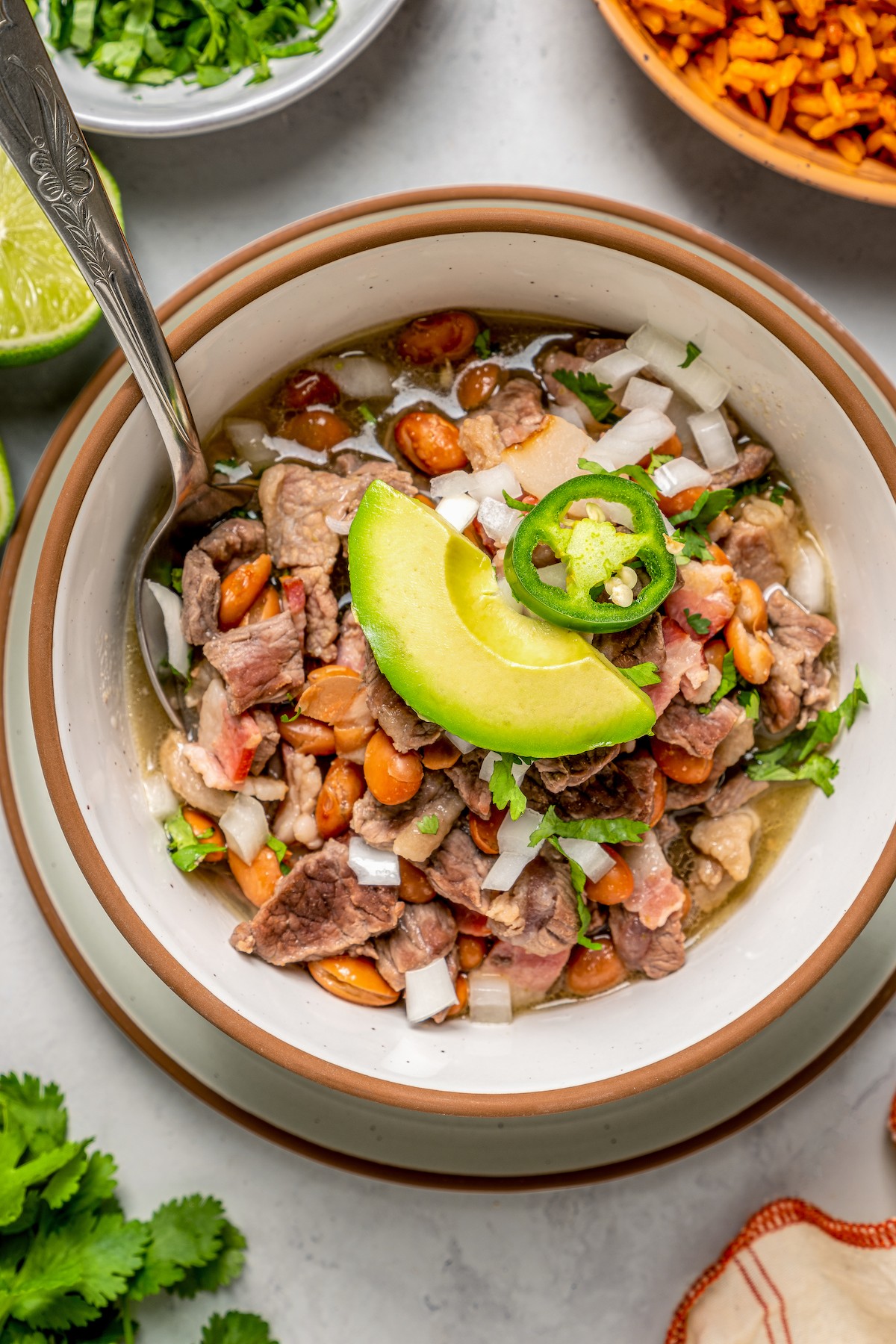
Want to save this recipe?
Why You’ll Love This Carne en su Jugo Recipe
The following reasons will convince you to add this Mexican recipe to your weeknight menu ASAP:
- Authentic. With homemade or store-bought salsa, this recipe is packed with all the local-only cheats and tricks you need to make your life easier and keep things authentic.
- Easy. All you need to do is cook the beef and bacon, blend the salsa, and simmer everything together.
- Family-friendly. Reduce the heat or add more chile depending on who you’re serving it to. The whole family will love it!
- Comforting. Between the beans, juicy steak, bacon, and spicy broth, every spoonful is comfort-food at its best.
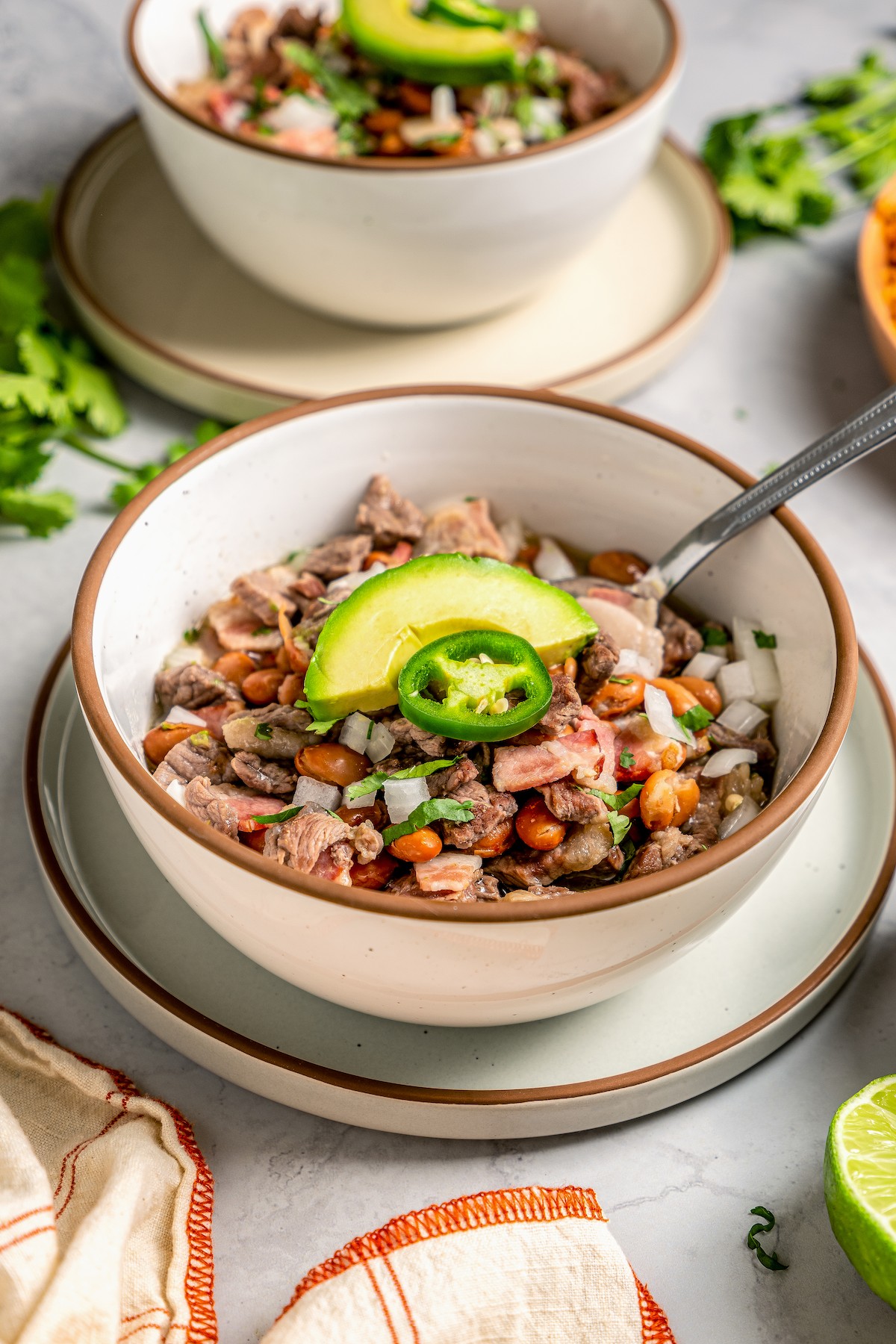
What Is Carne en su Jugo?
Carne en su jugo is a popular dish from the state of Jalisco, Mexico. The name translates to “beef served in its cooking juices” and consists of thinly sliced beef simmered in a slightly spicy salsa-based broth. To make it extra filling, beans and bits of bacon are often added but they’re not completely necessary. Once served, it’s topped with chopped cilantro, onions, and sliced avocado.
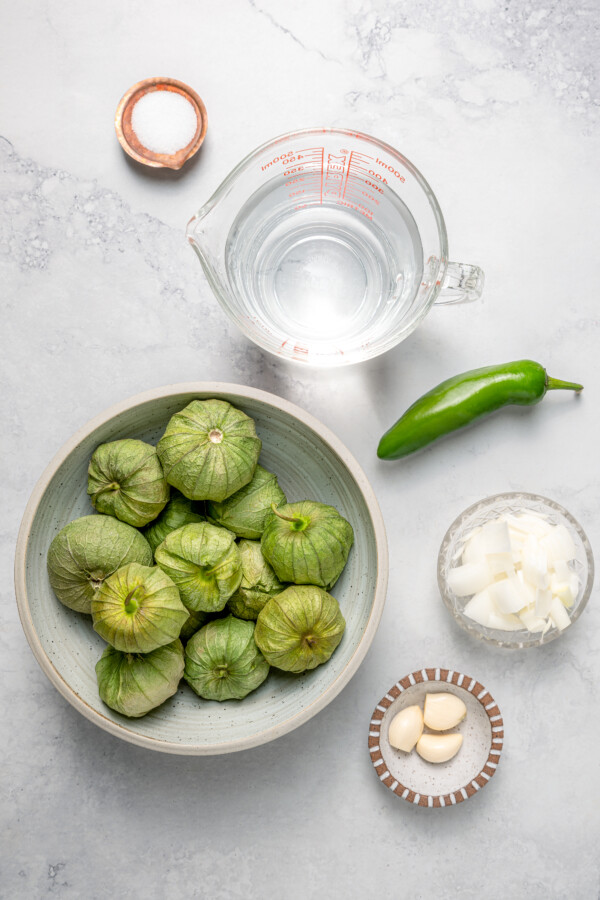
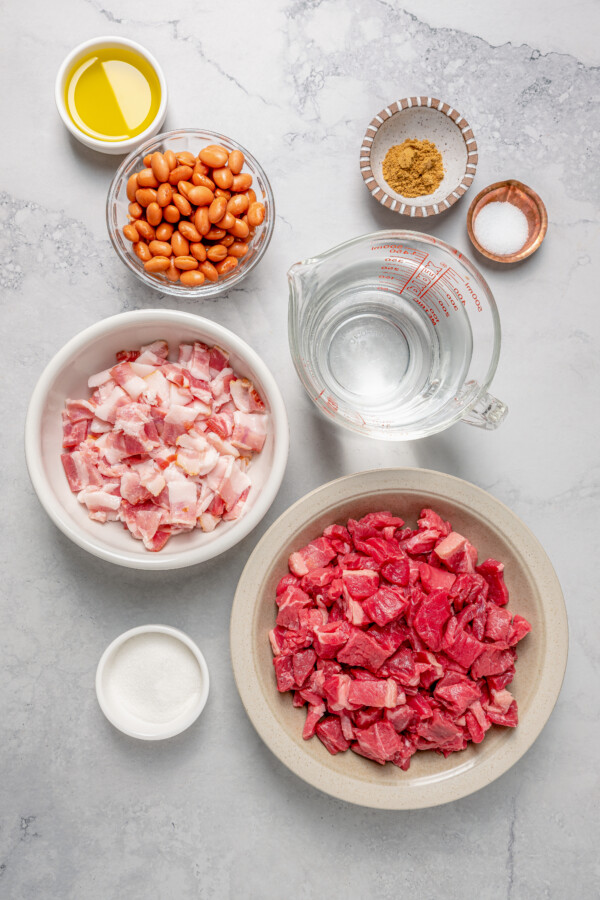
Recipe Ingredients
This authentic recipe is loaded with Mexican ingredients like tomatillos, jalapeño, and beans. Check the recipe card at the bottom of the post for full ingredient amounts.
For the Sauce
- Tomatillos: Husks removed.
- White Onion: Yellow onion is a good swap.
- Garlic Cloves: Don’t use garlic powder for this.
- Jalapeño: Feel free to use a serrano instead for a spicier heat.
- Water: You can also use beef or veggie stock.
- Salt
For the Meat
- Bacon
- Vegetable Oil: Corn and canola oil are good swaps. Don’t use olive oil.
- Beef: Thinly sliced beef: sirloin, strip loin, tenderloin, etc.
- Ground Cumin
- Water
- Pinto Beans: Use canned or homemade Frijoles de la Olla.
- Salt
- Sugar: White or light brown sugar work great.
What Beef Should I Use?
Thinly sliced beef is best for this recipe. Cuts like top sirloin, strip loin, rib eye, or tenderloin are perfect, just ask your butcher to help you out so you can reduce the prep time.
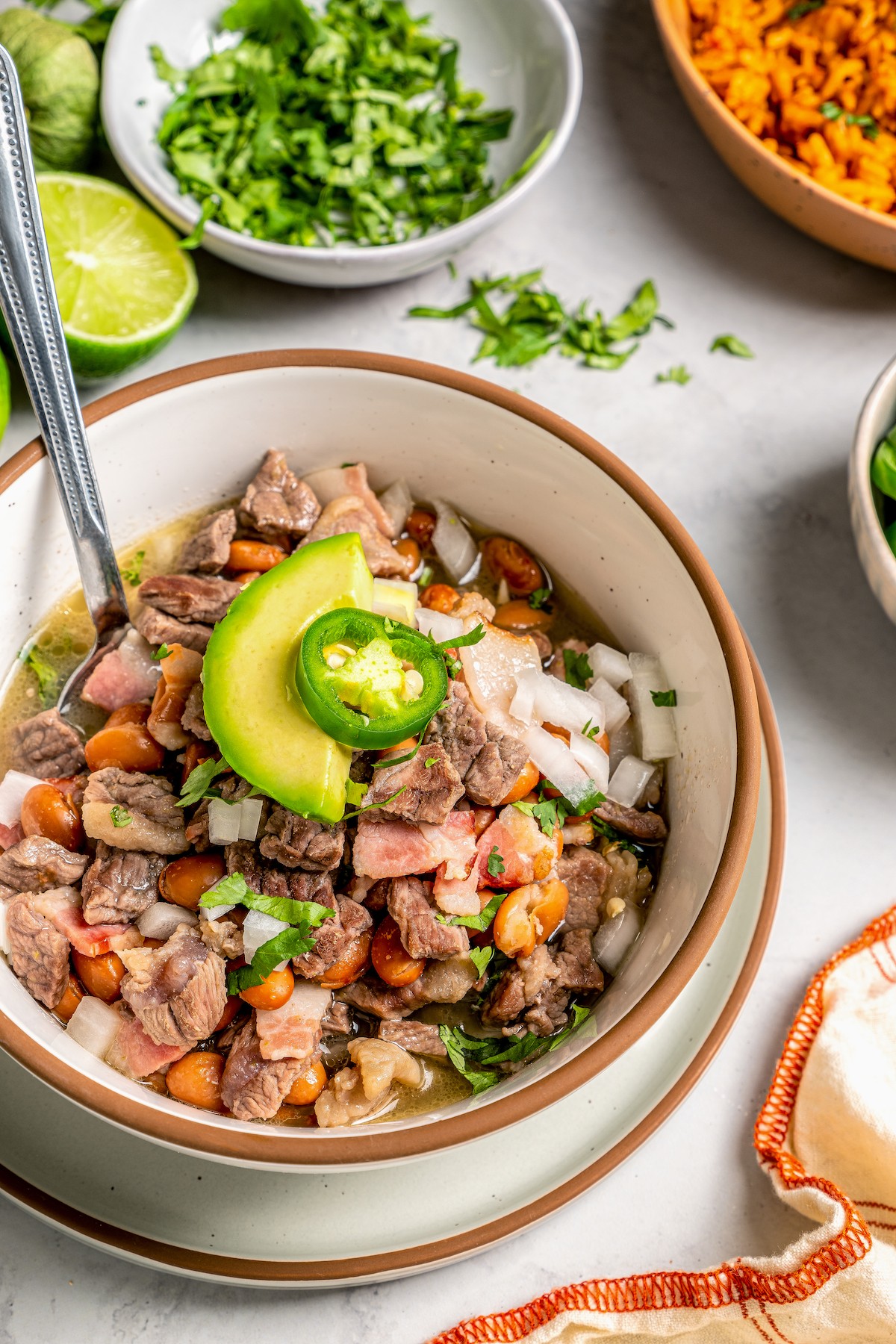
How To Make Carne en su Jugo
- Boil: Boil the tomatillos, onion, garlic, and jalapeño in water, for 10-15 minutes, until the tomatillos have changed color into a more muted green.
- Blend: Remove the pot from the heat and strain the ingredients. Reserve 1 cup of cooking liquid. Discard the rest of the water. Add everything to the blender. Process it until you get a smooth mixture. Season with salt, to taste, and set it aside.
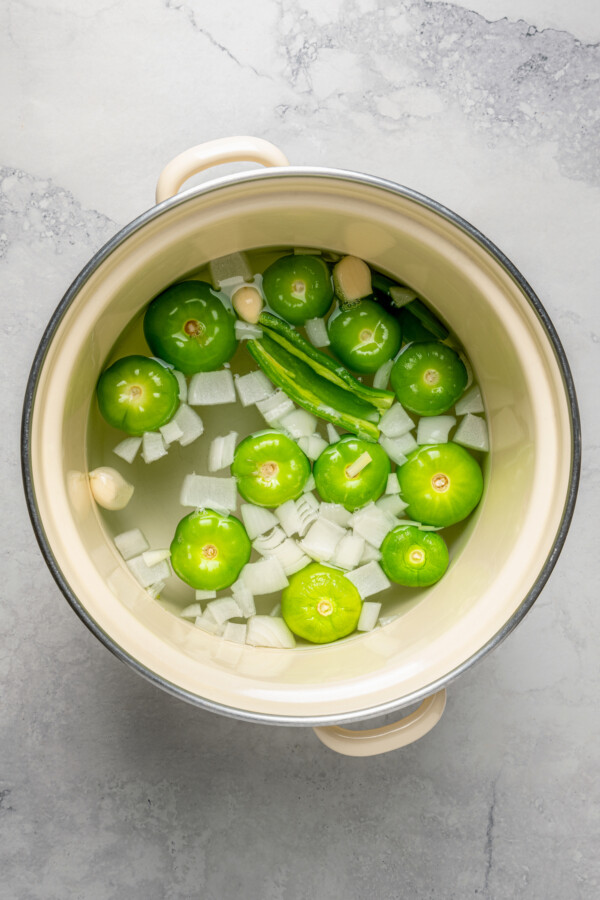
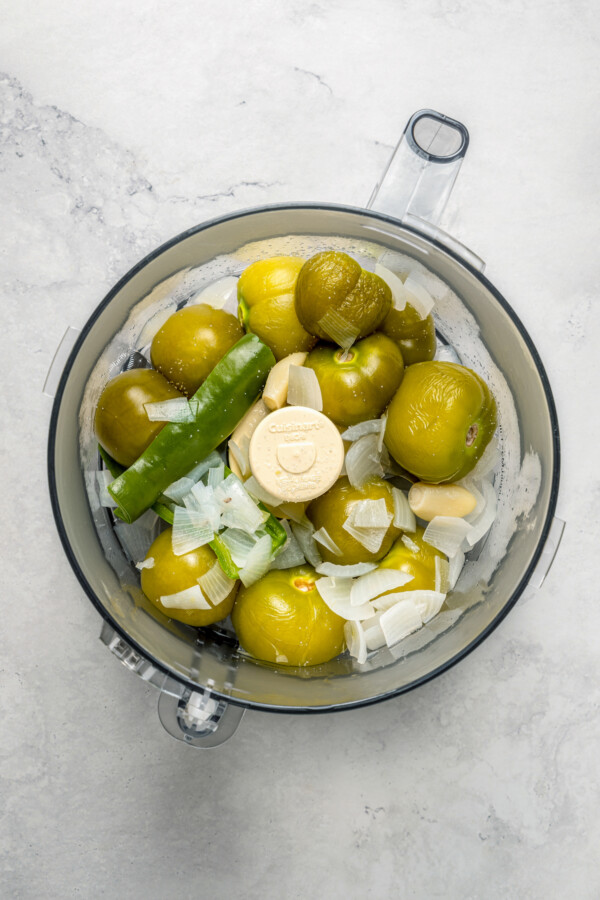
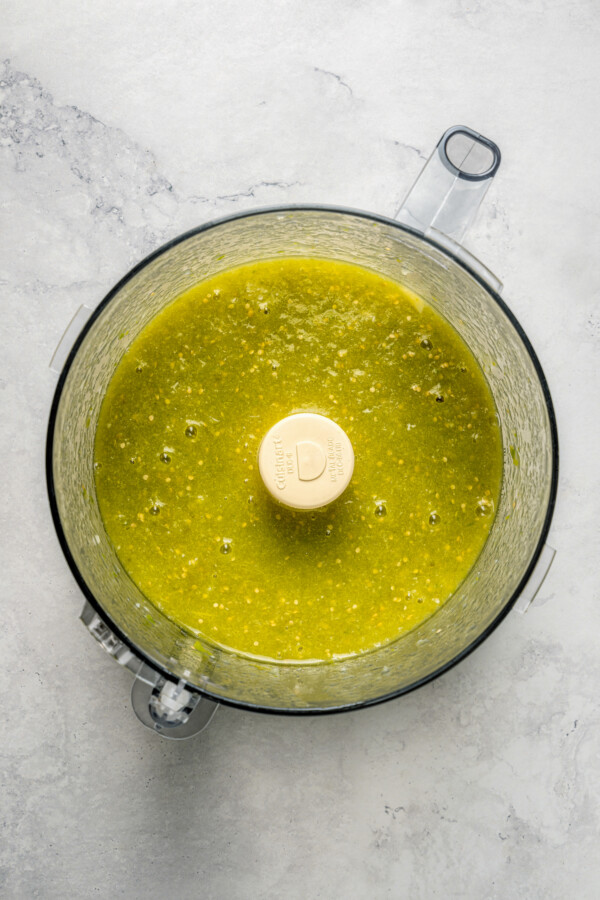
- Cook The Meat: Fry the bacon in a large pot until it’s crispy. Pour the vegetable oil into the pot. Add the sliced beef. Let it cook for 8-10 minutes or until browned. Sprinkle in the cumin and stir to combine.
- Add Sauce and Beans: Pour in the water and use a wooden spoon to gently scrape the bottom of the pot. Strain in 2-3 cups of the prepared sauce. Add the beans.
- Simmer: Bring the mixture to a simmer. Let it cook for another 25-30 minutes. Season with salt. Sprinkle in the sugar. Mix well and adjust the seasoning with more salt as needed. Serve and enjoy.
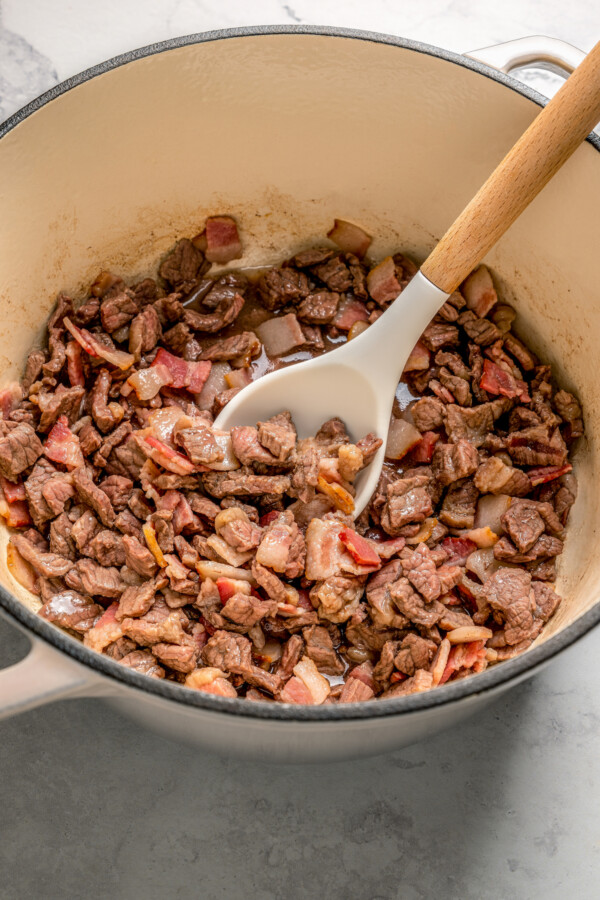
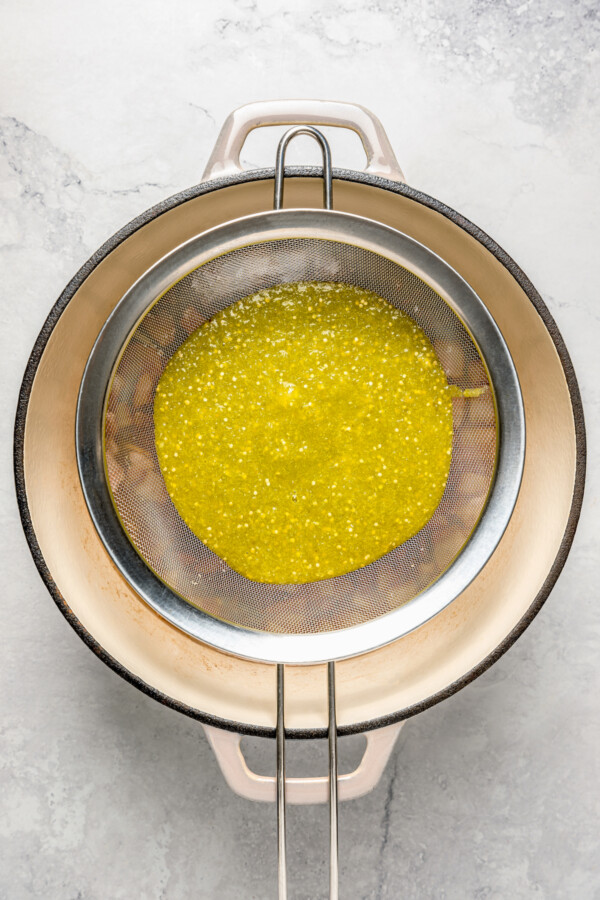
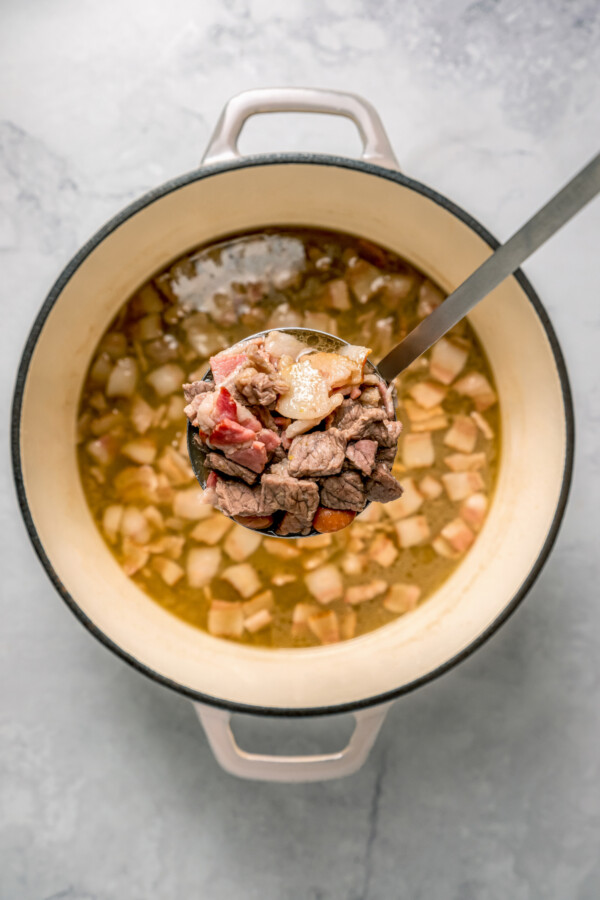
Tips for Success
With these tips, you’ll be making carne en su jugo like a true local:
- Use leftover beans. Rinse and drain any leftover Frijoles de la Olla or Frijoles Charros and add them to the recipe. You’ll cut down on prep time and reduce food waste.
- Make it spicy. Increase the amount to 2-3 jalapeños or add in 1-2 small serrano chiles to give your recipe a kick of heat. Remember, leaving the seeds and membrane in your chiles will make them much spicier.
- Add spices. Sprinkling in 1 teaspoon of smoked paprika and 1/2 teaspoon of dried oregano when cooking the beef is an easy way to add extra flavor to your soup.
- Go for store-bought. Sometimes life gets in the way of things and you need to cut a few corners to set dinner on the table. When this happens, swap the homemade salsa for your favorite organic or high-quality salsa verde instead.
What to Serve With Carne en su Jugo
Carne en su jugo is great with all sorts of Mexican appetizers and sides. Try to stay away from saucy or heavily spiced dishes so the flavors don’t clash. Homemade Corn Tortillas are perfect for dipping into the soup or making tacos. My Nopales Asados Tacos and some Authentic Guacamole are perfect sides. You can even add a bit of Mexican Rice on the side or right into the soup.
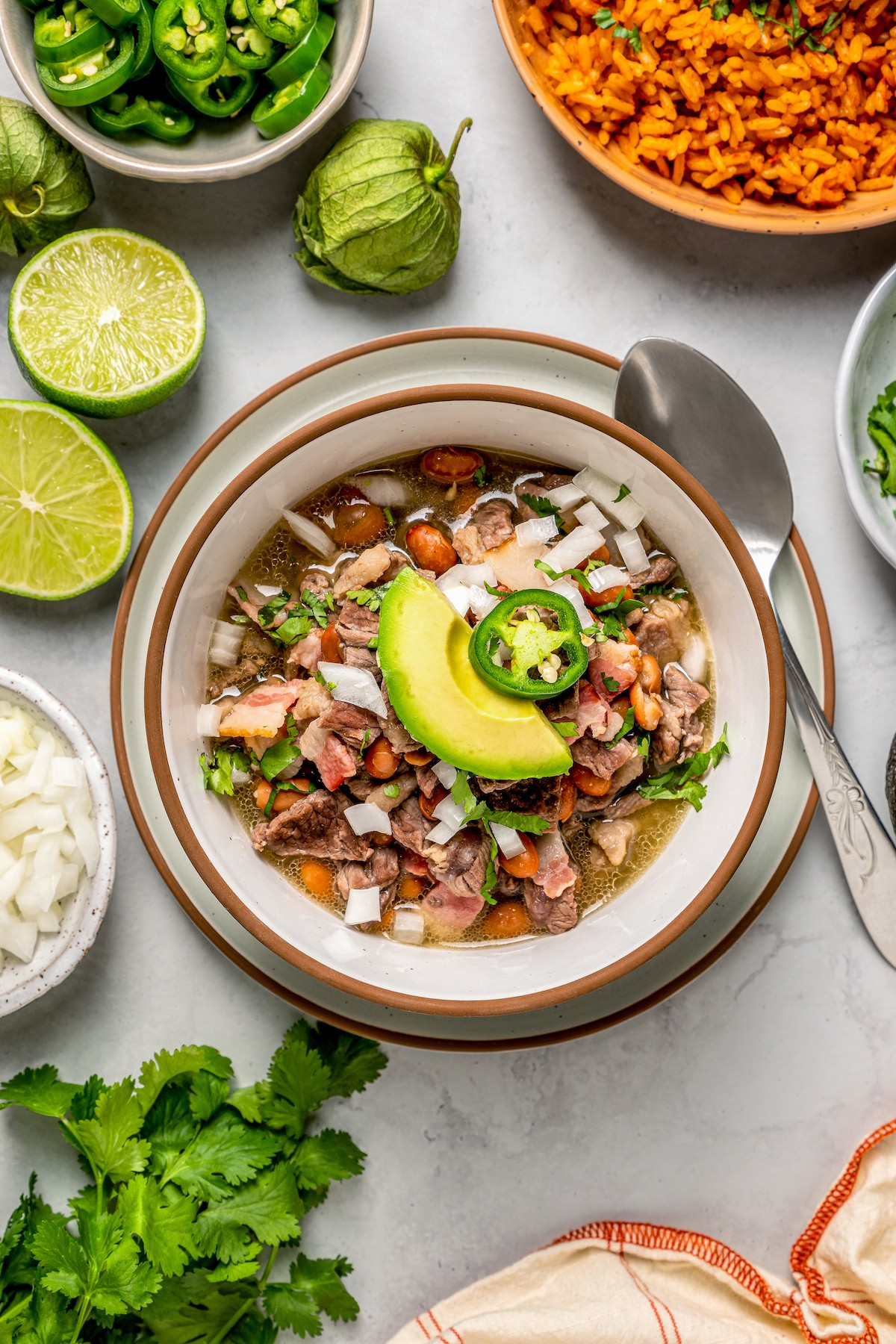
How to Store & Reheat Leftovers
Once fully cooled, refrigerate any leftovers in an airtight container for up to 5 days. Keep it away from the sun when it’s on the counter for reheating.
Pop it into the microwave for 1 to 2 minutes or until warm. You can also heat it in a pot over medium heat for 6 to 8 minutes.
Can I Freeze Carne en su Jugo?
Absolutely! Transfer the cooled carne en su jugo to a freezer-friendly container or bag. Freeze it for up to 3 months. Thaw it overnight in the fridge before reheating as usual.
More Authentic Mexican Recipes
- Nopales Asados Tacos
- Restaurant Style Salsa
- Salpicon de Res
- Instant Pot Cochinita Pibil
- Pozole Rojo
- Rajas (Creamy Roasted Poblanos)
- Flank Steak Tacos
Carne en su Jugo
Ingredients
For the Sauce
- 10 large tomatillos
- ¼ cup diced white onion
- 3 large garlic cloves
- 1 jalapeño, seeds and membrane removed
- water
- 1 teaspoon kosher salt
For the Meat
- 4-5 slices bacon, diced
- 1 tablespoon vegetable oil
- 1 ½ pounds thinly sliced beef, cut into 1/2″ squares
- ½ teaspoon ground cumin
- 4 cups water
- 1 ½ cups cooked pinto beans, drained
- ½ teaspoon salt
- 1 ½ teaspoons granulated sugar
Want to save this recipe?
Instructions
- Bring a large pot of water to a boil over medium-high heat. Add the tomatillos, onion, garlic, and jalapeño. Let them boil for 10-15 minutes or until the tomatillos have become a muted green color.
- Reserve 1 cup of cooking liquid. Remove the pot from the heat and strain the ingredients. Discard the rest of the water. Add everything (1 cup reserved cooking liquid, tomatillos, onion, garlic and jalapeño) to the blender. Process it until you get a smooth mixture. Strain the tomatillo sauce through a fine mesh sieve. Season with salt, to taste, and set it aside.
- Place a large pot over medium heat. Add the bacon and let it cook for 5-6 minutes, until browned. Don't worry if it gets a little crispy.
- Pour the vegetable oil into the pot. Add the beef. Let it cook for 8-10 minutes, until browned. Sprinkle in the cumin and stir to combine.
- Pour in the water and use a wooden spoon to gently scrape the bottom of the pot. Add in 2 to 3 cups of the prepared tomatillo sauce (depending on how broth-y you want the soup) and add the beans.
- Bring the mixture to a simmer. Let it cook for another 25-30 minutes. Sprinkle in the sugar. Mix well and adjust the seasonings, to taste. Serve and enjoy.
Notes
Nutrition
Categories:
Post may contain affiliate links. Read my disclosure policy.

